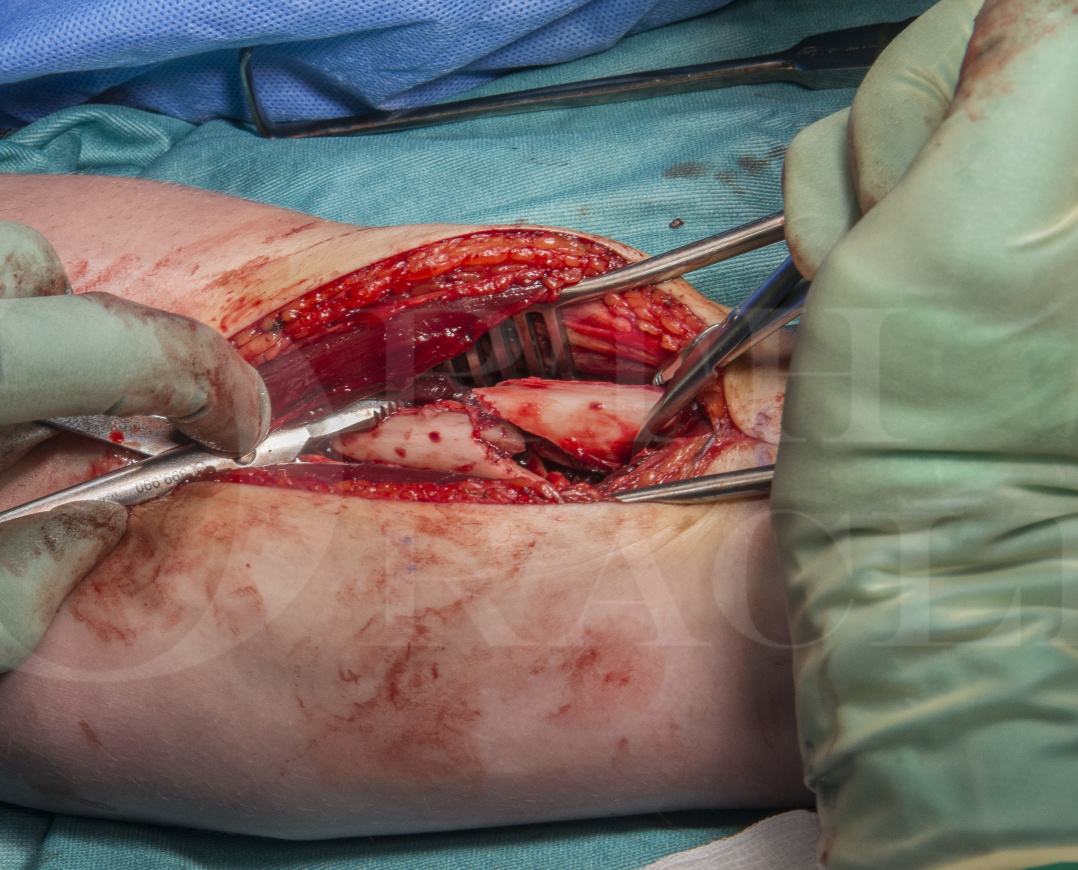Galeazzi radial fracture-dislocation: Fixation using Synthes LCP locking plate
Overview

Subscribe to get full access to this operation and the extensive Upper Limb & Hand Surgery Atlas.
Learn the Galeazzi radial fracture-dislocation: Fixation using Synthes LCP locking plate surgical technique with step by step instructions on OrthOracle. Our e-learning platform contains high resolution images and a certified CME of the Galeazzi radial fracture-dislocation: Fixation using Synthes LCP locking plate surgical procedure.
A Galeazzi fracture is a fracture of the middle to distal third of the radius and either a dislocation or subluxation of the distal radio-ulnar joint (DRUJ). The usual mechanism is high energy and thought to involve axial force through a hyper-pronated forearm. Galeazzi fractures are rare and only account for 3-7% of forearm shaft fractures.
In 1822, Sir Astley Cooper first described the injury however, the fracture pattern was named after an Italian Riccardo Galeazzi after his presentation of 18 cases in 1934.
The forearm is a complex area of anatomy and represents a complicated interaction of 6 joints:
- Radio-carpal joint
- Ulnar-carpal joint
- Distal radio-ulnar joint
- Radio-capitellar joint
- Ulnar-trochlear joint
- Proximal radio-ulnar joint
Any injury to either the radius or the ulna or both will cause an associated disruption of some of these joints. It is therefore paramount that an anatomic reduction is achieved to prevent any loss of function.
The Synthes Locking Compression Plate (LCP) has uniformly spaced combination (combi) holes. The plate can be applied in any of the following modes:
- Compression
- Bridging
- Neutralisation
- Buttress
- Tension band
The combi holes can accommodate standard cortical / cancellous screws and locking screws. The combi holes are aligned as a “mirror image” relative to the middle of the plate. This places the threaded hole section (for locking screws) closer to the fracture and the dynamic compression unit (DCU) side of the hole is furthest away from the fracture. This means that with eccentric cortical or cancellous screw placement, compression is achieved at the fracture site.
As the plates allow the insertion of locking screws, this converts the construct into a fixed angle device and you do not need to rely on plate/bone compression to maintain the stability of the construct.
Author: Mr Ross Fawdington FRCS (Tr & Orth)
Institution: The Queen Elisabeth Hospital, Birmingham, UK.
Clinicians should seek clarification on whether any implant demonstrated is licensed for use in their own country.
In the USA contact: fda.gov
In the UK contact: gov.uk
In the EU contact: ema.europa.eu
Online learning is only available to subscribers.



















